Effective immediately masking is required for everyone when present on all inpatient units, in the Emergency Department (ED), the Urgent Care Centre (UCC), and the Children’s Outpatient Centre (COPC).
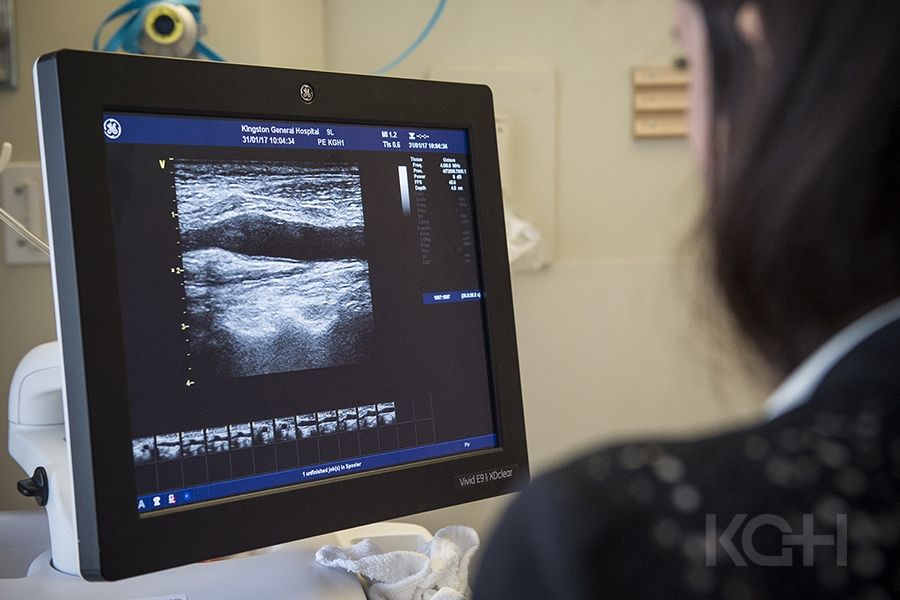
A KGHRI clinician scientist who pioneered the use of 3D ultrasound to assess heart disease is taking his imaging research into new territory.
Dr. Amer Johri, who is also assistant professor of echocardiography at Queen’s University, uses 3D ultrasound to quantify the amount of cholesterol and fat deposits, called plaques, in the arteries of the neck, as a way of predicting blockages elsewhere. Now he wants to leverage the radiofrequency signalling capabilities of that imaging technology to make prediction of atherosclerosis, a deadly disease, earlier and more precise.
“We are moving beyond just quantifying plaques, to looking at plaque composition using RF signaling in the carotid,” says Dr. Johri, who founded the Cardiac Imaging Network at Queen’s (CINQ). “It’s not just the amount but the type of plaque that might be correlated with outcomes such as heart attack and stroke.”
Different textures may predict how the plaques behave, he says. “Softer plaques are more prone to rupturing or breaking off, causing problems in other organs such as the heart or brain.”
Dr. Johri’s new project has been recognized with a $300,000 John R. Evans Leaders Fund award from the Canada Foundation for Innovation. He and his co-investigator, Dr. Parvin Mousavi, Director of the Medical Informatics Lab at Queen’s School of Computing, will use the funding to purchase and customize a commercial carotid ultrasound machine, and, in collaboration with its manufacturer, customize the machine’s circuitry to enable better analysis of its signals to determine which plaques are more dangerous. They will then use the technology to look at the carotid arteries of patients being assessed for angiograms.
“There are RF signals that are detected by the ultrasound machine, but they don’t contribute to the formation of the ultrasound image,” he explains. “We’ll be capturing these hidden signals and looking at ways of schematically quantifying and organizing them to reflect the texture of the plaque.”
Ultimately he hopes the project will seed a larger research program that pairs atherosclerosis research with computing expertise. “Training that would enable people to look more deeply into the characteristics of images would be a wonderful addition to our program.”
“Atherosclerosis is an extensive problem in Kingston, and if we can do things to detect it earlier and better, we can help a large portion of the Kingston community.”
There is also potential, he says, for this work to be translated commercially. “The idea is to eventually show utility in this area. In future this approach might become part of what the commercial machine is capable of doing.”
“Dr. Johri has a gift for discovering the innovative potential in existing technology,” says Dr. Roger Deeley, Vice President of Health Sciences Research at KGH, and President of the KGH Research Institute. “His work is exciting because of its potential for less invasive, more effective approaches to diagnosing and treating patients while also enhancing the capability of a proven technology. It is wonderful to see his research recognized with this award.”
Gallery

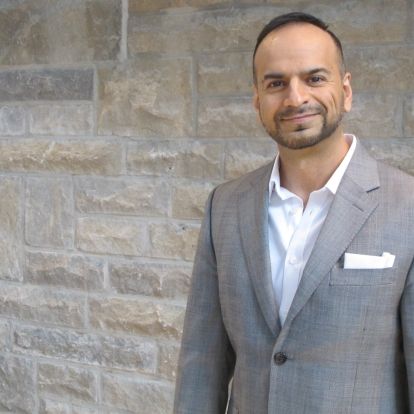
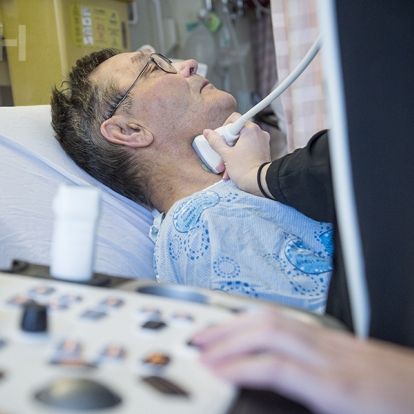
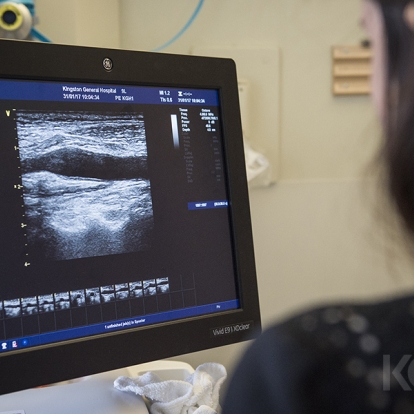
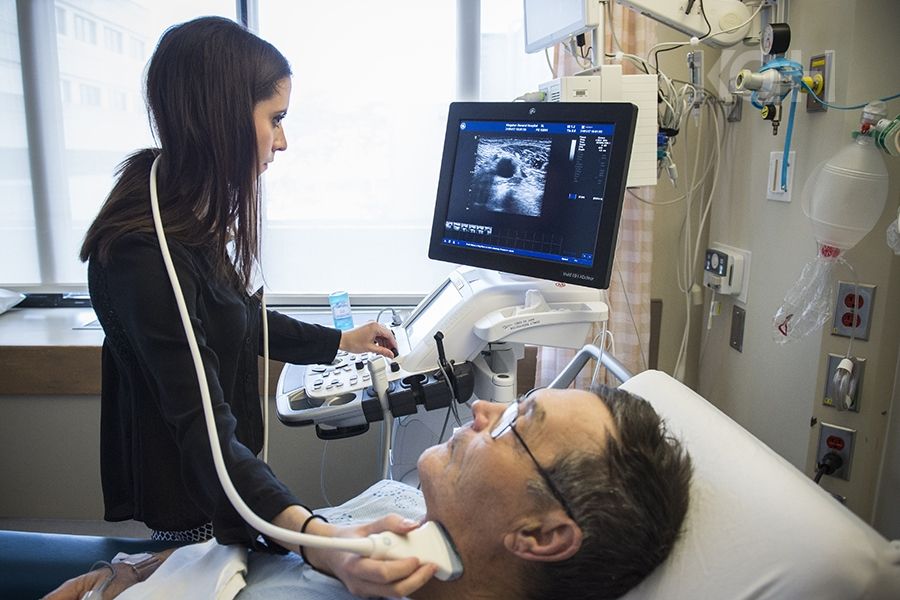
One of Dr. Johri’s team members using a 3D ultrasound machine during an assessment.
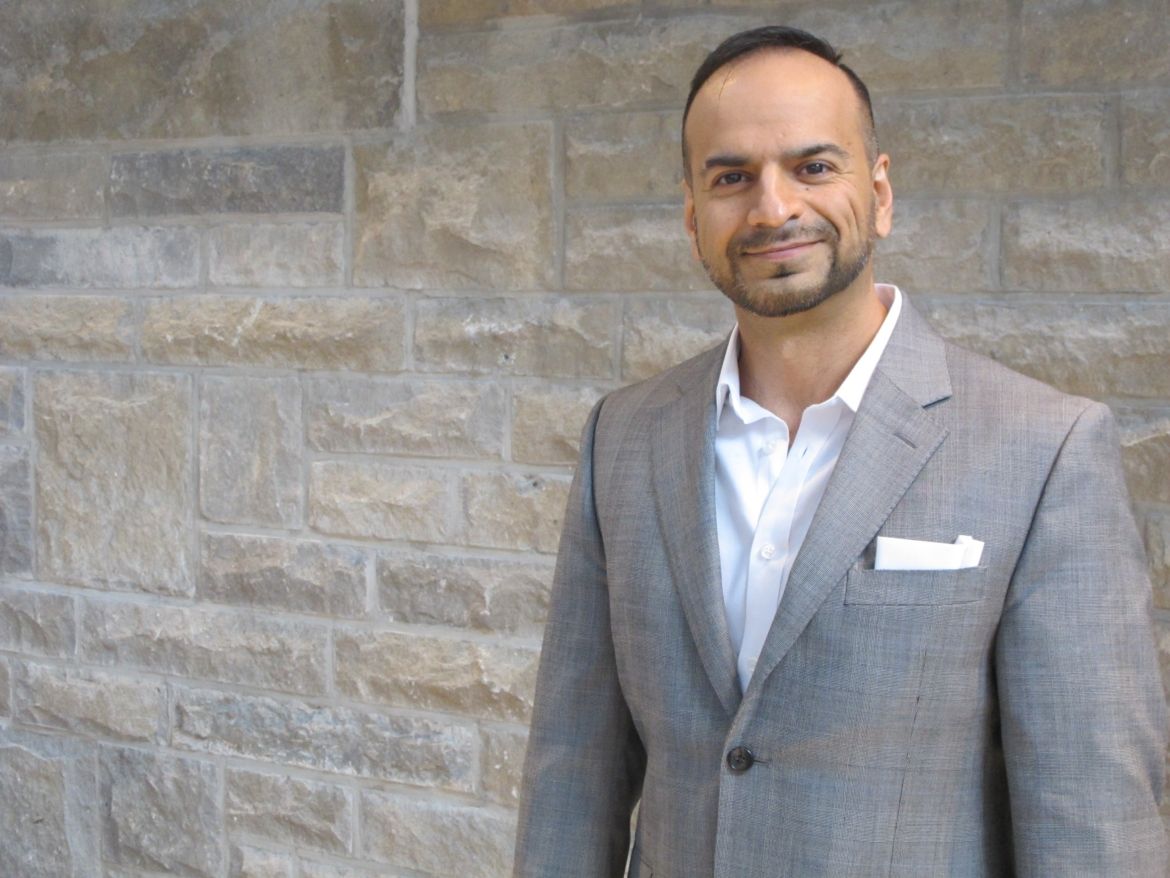
Dr. Amer Johri, Cardiologist at Kingston General Hospital and Clinician Scientist at KGH Research Institute
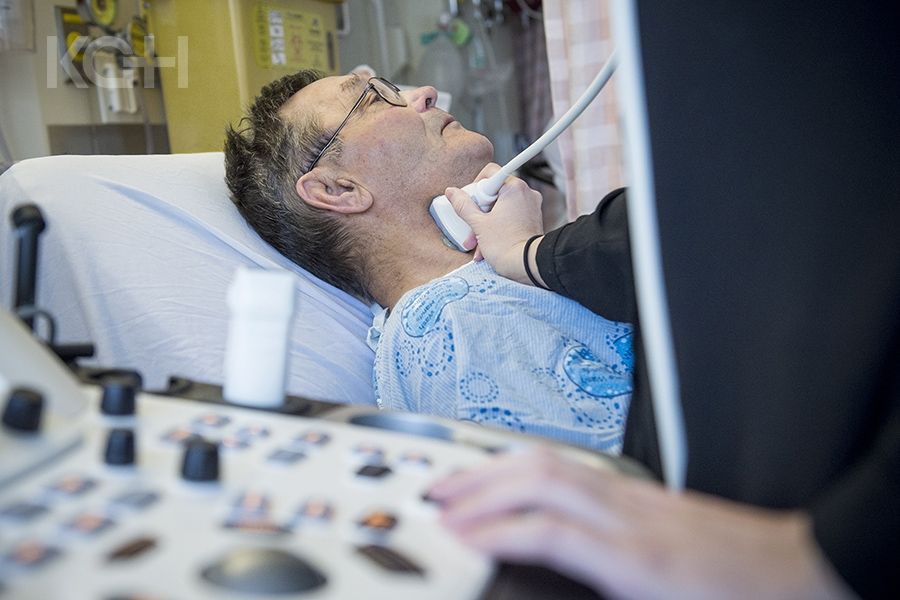
One of Dr. Johri’s team members using a 3D ultrasound machine during an assessment.
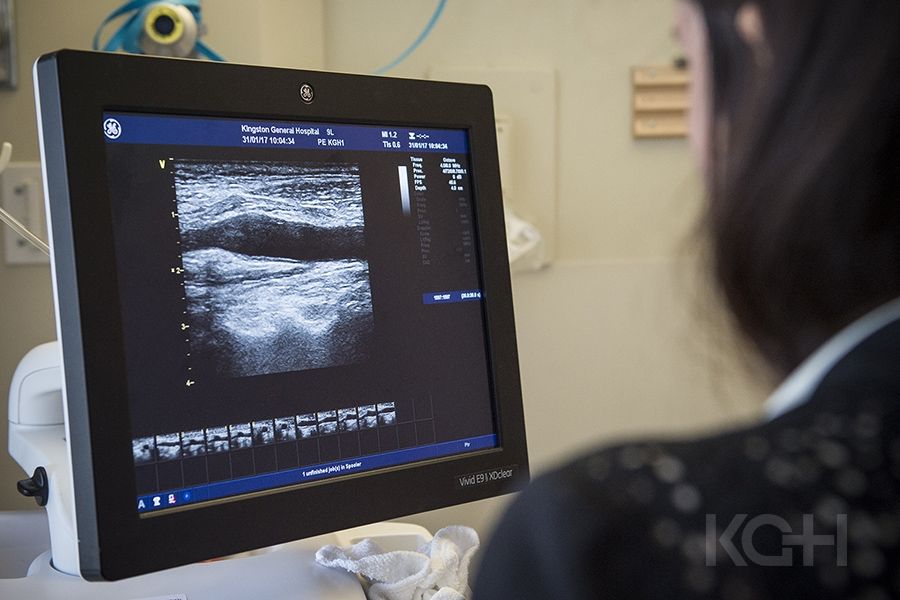
One of Dr. Johri’s team members using a 3D ultrasound machine during an assessment.



